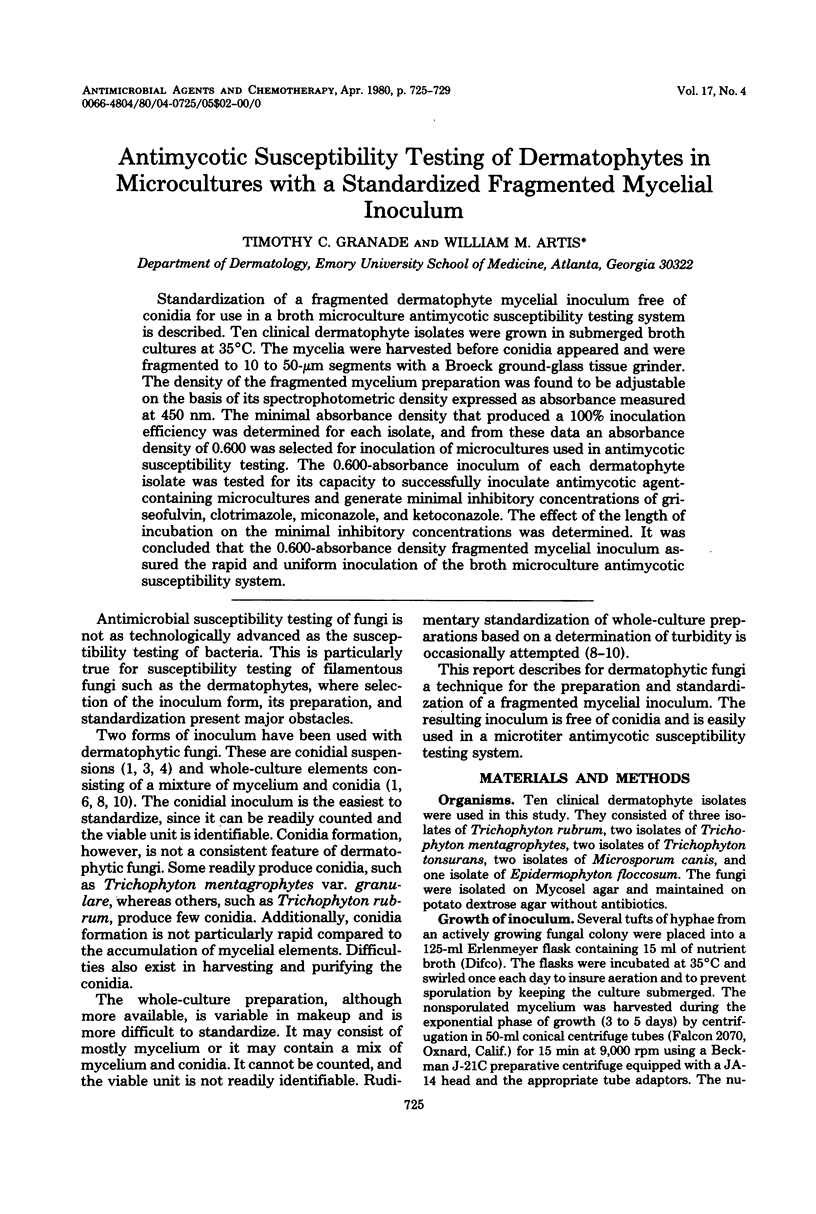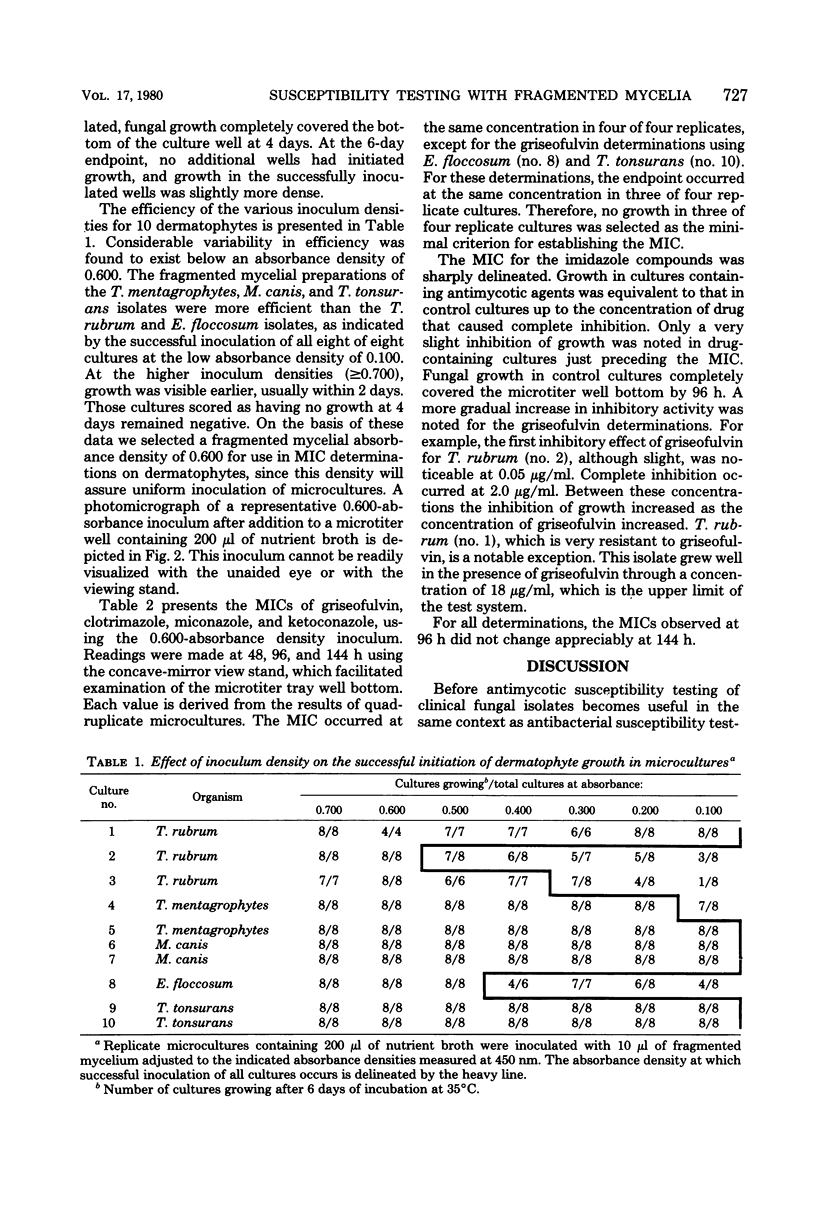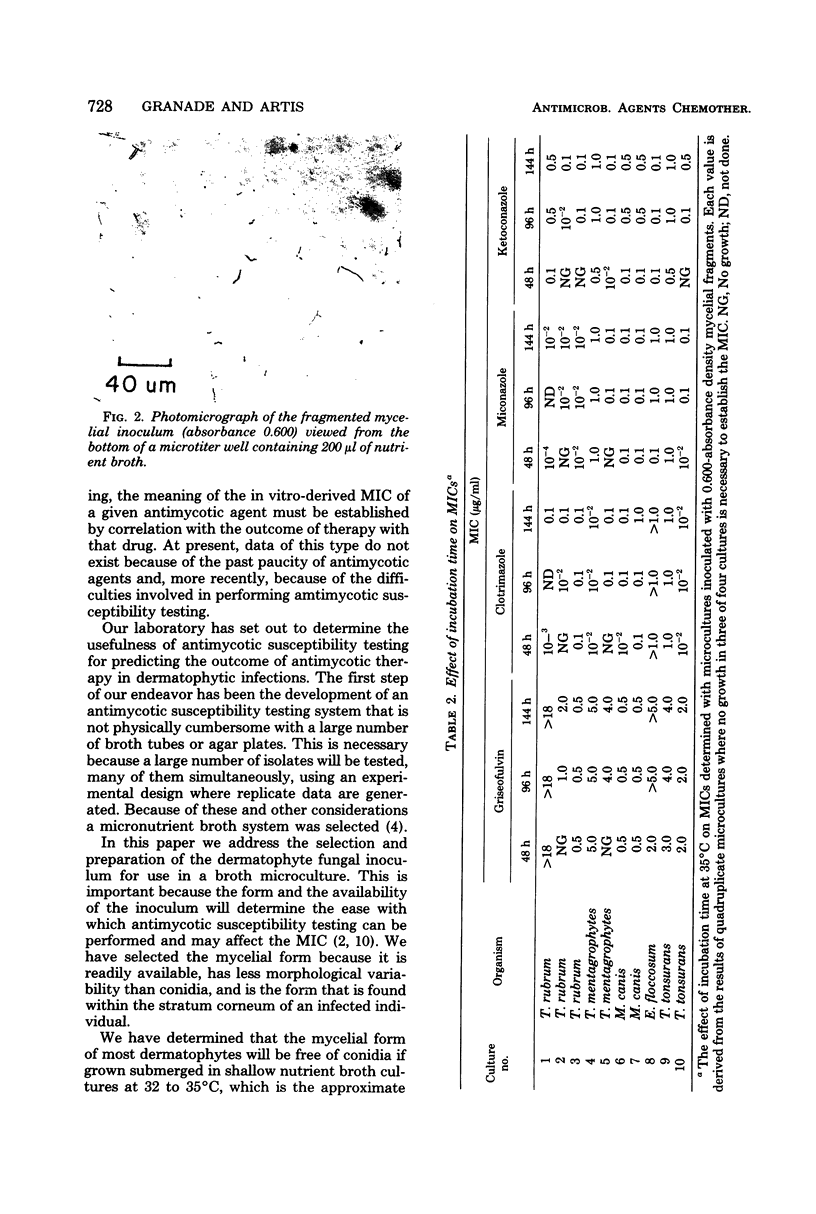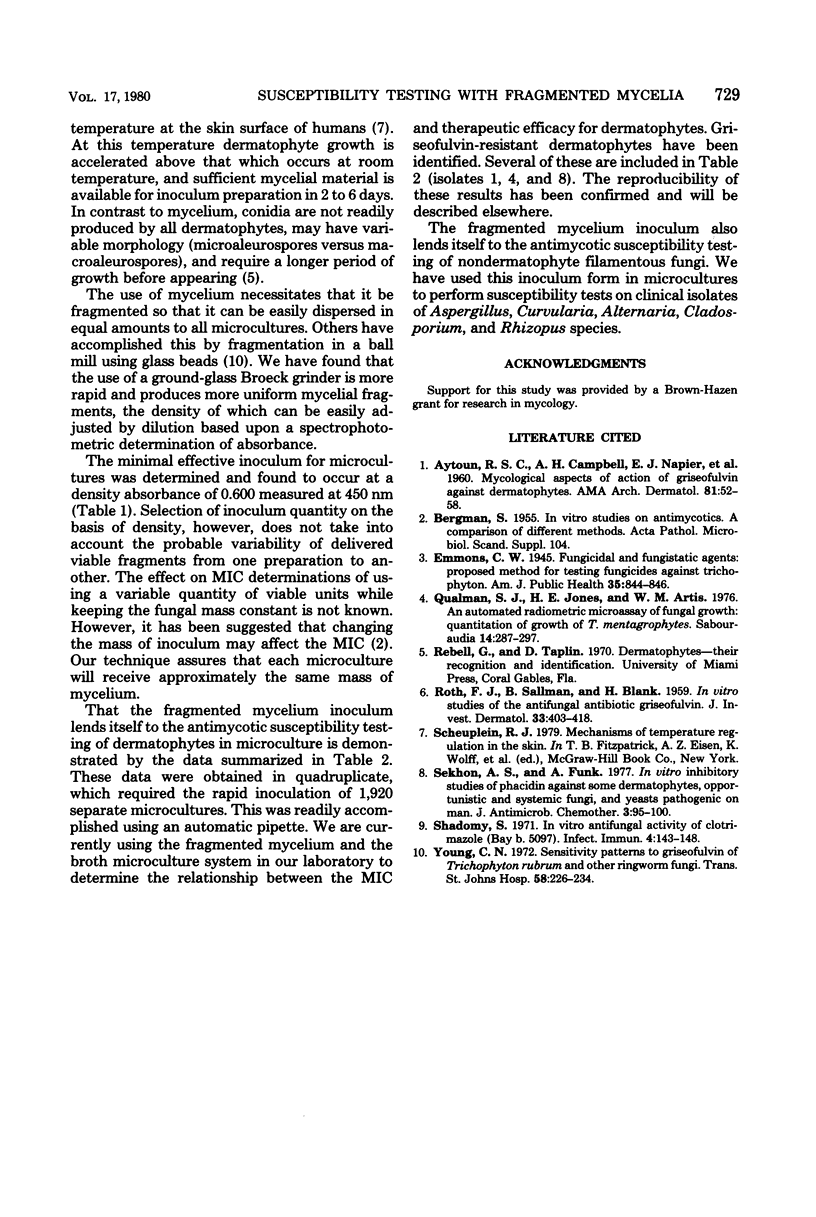Abstract
Standardization of a fragmented dermatophyte mycelial inoculum free of conidia for use in a broth microculture antimycotic susceptibility testing system is described. Ten clinical dermatophyte isolates were grown in submerged broth cultures at 35 degrees C. The mycelia were harvested before conidia appeared and were fragmented to 10 to 50-micron segments with a Broeck ground-glass tissue grinder. The density of the fragmented mycelium preparation was found to be adjustable on the basis of its spectrophotometric density expressed as absorbance measured at 450 nm. The minimal absorbance density that produced a 100% inoculation efficiency was determined for each isolate, and from these data an absorbance density of 0.600 was selected for inoculation of microcultures used in antimycotic susceptibility testing. The 0.600-absorbance inoculum of each dermatophyte isolate was tested for its capacity to successfully inoculate antimycotic agent-containing microcultures and generate minimal inhibitory concentrations of griseofulvin, clotrimazole, miconazole, and ketoconazole. The effect of the length of incubation on the minimal inhibitory concentrations was determined. It was concluded that the 0.600-absorbance density fragmented mycelial inoculum assured the rapid and uniform inoculation of the broth microculture antimycotic susceptibility system.
Full text
PDF




Images in this article
Selected References
These references are in PubMed. This may not be the complete list of references from this article.
- Qualman S. J., Jones H. E., Artis W. M. An automated radiometric microassay of fungal growth: quantitation of growth of T. mentagrophytes. Sabouraudia. 1976 Nov;14(3):287–297. doi: 10.1080/00362177685190431. [DOI] [PubMed] [Google Scholar]
- ROTH F. J., Jr, SALLMAN B., BLANK H. In vitro studies of the antifungal antibiotic griseofulvin. J Invest Dermatol. 1959 Dec;33:403–418. doi: 10.1038/jid.1959.164. [DOI] [PubMed] [Google Scholar]
- Sekhon A. S., Funk A. In vitro growth inhibitory studies of phacidin against some dermatophytes, opportunistic and systemic fungi, and yeasts pathogenic on man. J Antimicrob Chemother. 1977 Jan;3(1):95–100. doi: 10.1093/jac/3.1.95. [DOI] [PubMed] [Google Scholar]
- Shadomy S. In vitro antifungal activity of clotrimazole (Bay b 5097). Infect Immun. 1971 Aug;4(2):143–148. doi: 10.1128/iai.4.2.143-148.1971. [DOI] [PMC free article] [PubMed] [Google Scholar]
- Young C. N. Sensitivity patterns to griseofulvin of Trichophyton rubrum and other ringworm fungi. Trans St Johns Hosp Dermatol Soc. 1972;58(2):226–234. [PubMed] [Google Scholar]




